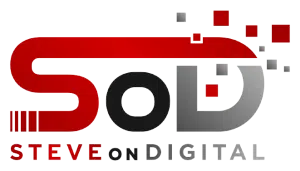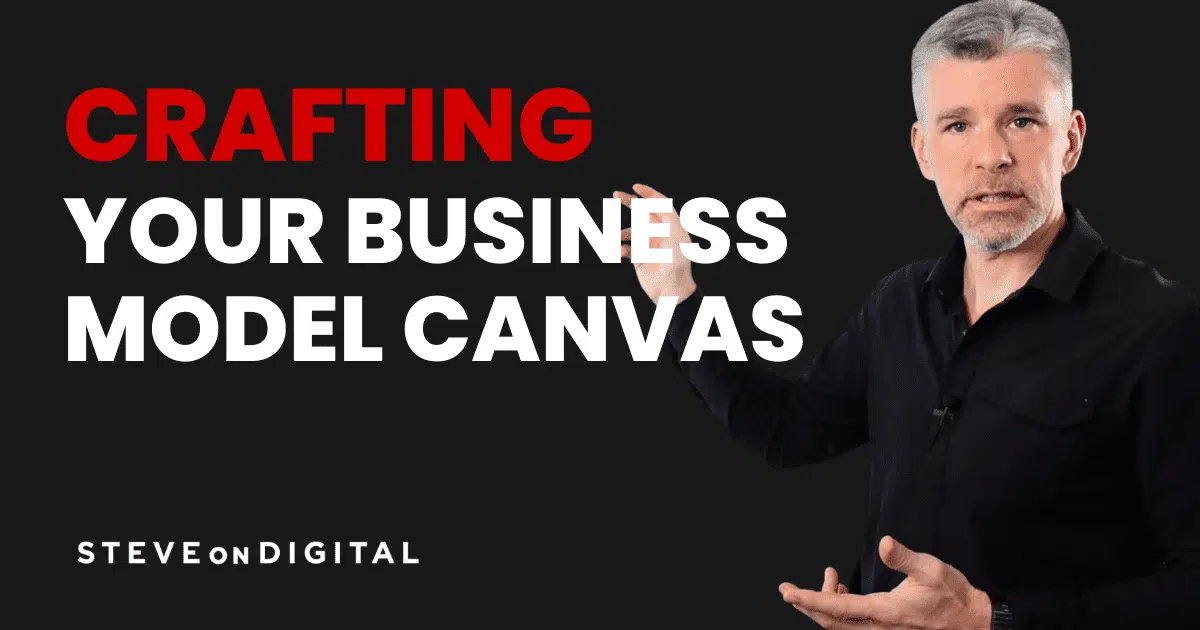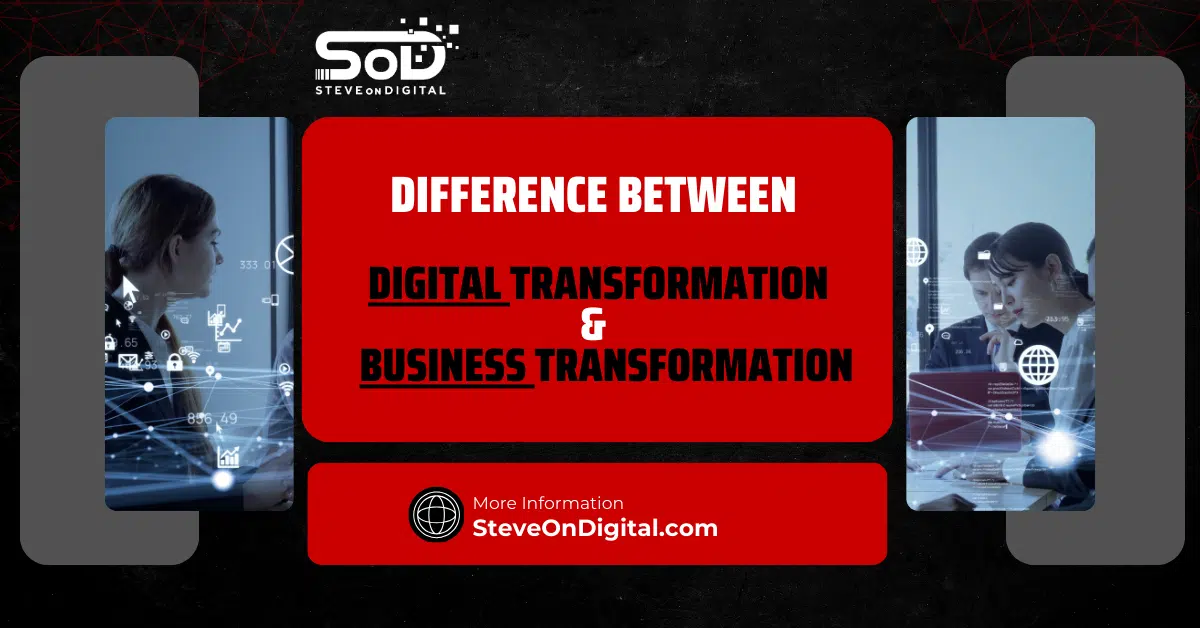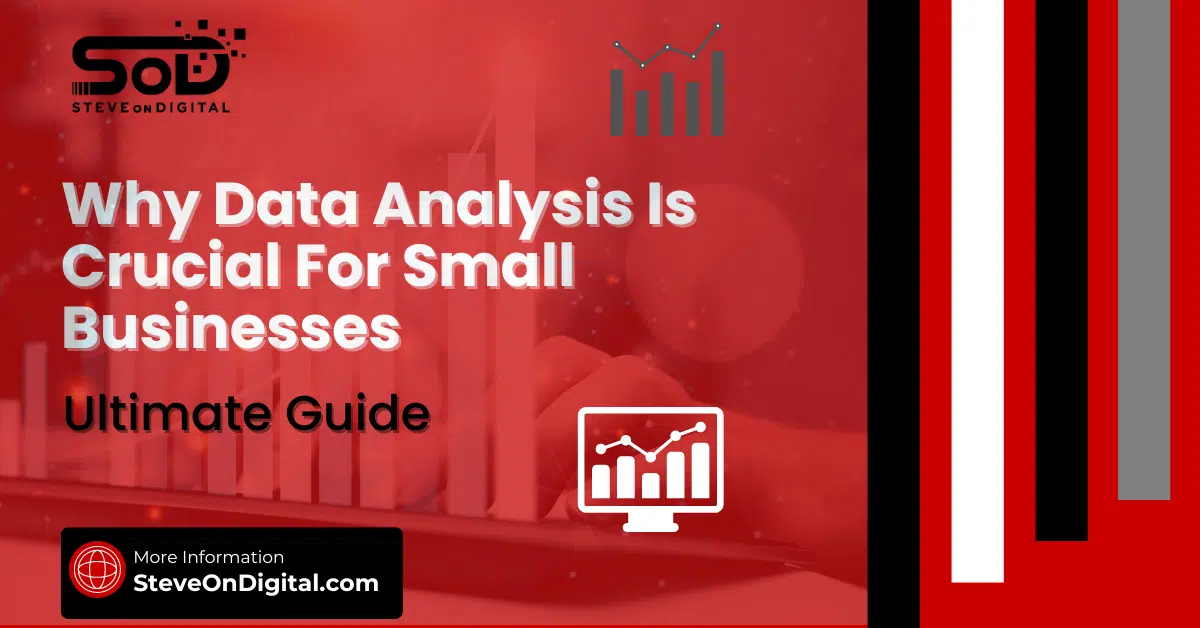The Business Model Canvas (BMC) is a visual tool to help describe, design, and pivot your business model. It simplifies the complex elements of a traditional business plan into a single page with nine key components, making it easier to define and evaluate a business idea.
Using the BMC can enhance strategic planning and business management by providing a clear, shared understanding of your business model. It helps identify gaps, promote innovation, and adapt to market changes. I’ve found it invaluable for maintaining a flexible and up-to-date strategy, crucial for staying competitive in today’s fast-paced business environment.
I’m Steve, a digital transformation expert with a strong background in electrical engineering, an MBA, and a master’s in Project Management. I excel at helping SMEs navigate the digital landscape with practical insights. Let’s begin!
Business Model Canvas
The Business Model Canvas (BMC) is a strategic management tool that offers a visual framework to describe, design, challenge, and pivot your business model. Business model canvas explained: It is a tool for developing and improving business ideas, known for its simplicity and effectiveness as a one-page technique to aid in planning. Created by Alexander Osterwalder and Yves Pigneur, it simplifies the complexities of a traditional business plan into a single page, divided into nine essential elements. This visual format allows you to see all the critical components of your business at a glance, making it easier to understand, communicate, and manage your strategy.
Importance of Using a Business Model Canvas
Using the BMC has several advantages. Firstly, it provides a clear, shared understanding of your business model among your team, fostering better communication and collaboration. Secondly, it helps in identifying gaps and opportunities for improvement, promoting innovation. Finally, the BMC is flexible and can be updated regularly to adapt to changes in the market or your business environment, which is crucial for staying competitive.
Key Components of the Business Model Canvas
The BMC is made up of nine building blocks that represent the core aspects of a business. The business model canvas template serves as a strategic planning tool that simplifies and illustrates these key elements. Understanding these elements will help you create a comprehensive and effective business model.
Explanation of the Nine Building Blocks
- Key Partnerships: These are the external companies or individuals that you work with to achieve your business goals.
- Key Activities: The most important actions your business must take to operate successfully.
- Key Resources: The assets required to deliver your value proposition, reach markets, maintain customer relationships, and earn revenues.
- Value Propositions: The unique mix of products and services that create value for your specific customer segments.
- Customer Relationships: The types of relationships you establish with your customers to acquire and retain them.
- Channels: The ways you deliver your value proposition to your customers.
- Customer Segments: The different groups of people or organizations you aim to reach and serve.
- Cost Structure: All the costs involved in operating your business model.
- Revenue Streams: The ways your business makes money from each customer segment.
1: Key Partnerships
Key partners are crucial for the success and growth of any business. They help you leverage other companies’ strengths to achieve your objectives more efficiently.
Definition and Importance of Key Partnerships
Key partnerships involve collaboration with other businesses or entities that complement your business model. These partnerships can reduce risks, improve operations, and provide access to additional resources and capabilities.
Types of Key Partnerships
- Strategic Alliances: Partnerships with non-competitors to achieve common goals.
- Joint Ventures: Collaborative agreements to develop new businesses.
- Supplier Relationships: Long-term engagements with suppliers to secure reliable access to resources.
- Buyer-Supplier Relationships: Strategic alliances to ensure the availability of crucial inputs for your business.
| Type | Description |
| Strategic Alliances | Partnerships with non-competitors to achieve common goals |
| Joint Ventures | Collaborative agreements to develop new businesses |
| Supplier Relationships | Long-term engagements with suppliers to secure reliable access to resources |
| Buyer-Supplier Relationships | Strategic alliances to ensure the availability of crucial inputs for your business |
How to Identify and Develop Key Partnerships
Identifying and nurturing key partnerships involves a few strategic steps:
- Identify Potential Partners: Look for companies or individuals whose strengths complement your weaknesses.
- Evaluate Fit: Ensure alignment in terms of goals, culture, and values.
- Develop Relationships: Engage with potential partners through networking events, mutual connections, and direct outreach.
- Formalize Partnerships: Use contracts and agreements to outline the terms and expectations of the partnership.
2: Key Activities
Key activities are the critical actions that your business must undertake to operate successfully.
Definition and Examples of Key Activities
Key activities include the essential tasks that must be performed to create and deliver your value proposition, reach your markets, maintain customer relationships, and earn revenues. Examples include:
- Production: Manufacturing products or creating services.
- Problem Solving: Offering new solutions to customer problems.
- Platform/Network: Managing and promoting a platform or network.
Aligning Key Activities with Business Goals
It’s important to ensure that your key activities are aligned with your business goals. This alignment helps in maximizing efficiency and achieving strategic objectives. For instance, if your goal is to improve customer satisfaction, key activities might include enhancing customer service and streamlining the product delivery process.
Optimizing Key Activities for Efficiency
To optimize key activities, focus on:
- Streamlining Processes: Eliminate unnecessary steps to improve efficiency.
- Leveraging Technology: Use technology to automate and enhance processes.
- Continuous Improvement: Regularly review and refine activities to adapt to changes and improve performance.
3: Key Resources
Understanding Key Resources
Key resources are the assets that are essential for your business to deliver its value proposition, reach its markets, maintain customer relationships, and earn revenue. These resources are the backbone of your business model, ensuring you have what you need to operate effectively and efficiently.
Types of Key Resources
Key resources can be categorized into four main types:
- Physical Resources: These include tangible assets such as buildings, machinery, vehicles, and inventory.
- Intellectual Resources: This category encompasses intangible assets like patents, copyrights, brand reputation, and proprietary knowledge.
- Human Resources: The employees, contractors, and freelancers who bring their skills and expertise to your business.
- Financial Resources: Capital, credit lines, loans, and cash reserves that fund your operations and growth.
Managing and Acquiring Key Resources
Effective management and acquisition of key resources are critical for sustaining business operations and growth. Here are some best practices:
- Inventory Management: Use inventory management systems to track and control physical resources.
- Intellectual Property Protection: Register patents and trademarks to protect intellectual resources.
- Talent Acquisition: Develop a strong hiring process to attract and retain top talent.
- Financial Planning: Maintain a healthy cash flow and secure funding through diverse financial instruments.
4: Value Propositions
Defining Value Proposition
A value proposition is the distinct benefit a company provides to its customers through its products or services. It answers the fundamental question: why should customers choose your business over competitors? The value proposition is the heart of your business model canvas and drives all other elements.
Crafting a Strong Value Proposition
Creating a compelling value proposition involves understanding your customers’ needs and how your products or services meet those needs uniquely. Here are some tips:
- Identify Customer Pain Points: Understand the challenges and problems your customers face.
- Highlight Benefits: Focus on the benefits your product or service provides, not just the features.
- Differentiate from Competitors: Clearly articulate what makes your offering different and better than others.
Examples of Effective Value Propositions
- Apple: Offers innovative technology products that seamlessly integrate with each other, enhancing user experience.
- Dollar Shave Club: Delivers affordable razors directly to customers’ doors, emphasizing convenience and cost savings.
- Airbnb: Provides unique travel experiences by connecting travelers with local hosts, offering an alternative to traditional hotels.
5: Customer Segments
Identifying Customer Segments
Customer segments are the different groups of people or organizations your business aims to reach and serve. Identifying these segments helps tailor your value proposition, marketing efforts, and customer relationships to meet the specific needs of each group.
Importance of Targeting the Right Customer Segments
Targeting the correct customer segments is crucial because it ensures your efforts and resources are focused on the most profitable and receptive groups. This targeted approach enhances marketing efficiency, customer satisfaction, and overall business success.
Techniques for Analyzing Customer Segments
- Demographic Analysis: Examine characteristics such as age, gender, income, and education.
- Behavioral Analysis: Study customer behaviors, including purchasing patterns and product usage.
- Psychographic Analysis: Understand customer lifestyles, values, and interests.
6: Customer Relationships
Types of Customer Relationships
Businesses can establish various types of relationships with their customers, ranging from personal to automated:
- Personal Assistance: Direct interaction with customers through customer service representatives.
- Dedicated Personal Assistance: Assigning specific representatives to individual customers.
- Self-Service: Providing tools and resources for customers to help themselves.
- Automated Services: Using technology to offer services without human intervention.
Building and Maintaining Customer Relationships
Building and sustaining strong customer relationships is vital for customer retention and loyalty. Here are some strategies:
- Consistent Communication: Regularly engage with customers through emails, social media, and other channels.
- Customer Feedback: Actively seek and respond to customer feedback to improve your offerings.
- Loyalty Programs: Implement programs that reward repeat customers.
Impact of Customer Relationships on Business Growth
Effective customer relationships directly contribute to business growth by increasing customer satisfaction and loyalty. Satisfied customers are more likely to make repeat purchases and recommend your business to others, driving new customer acquisition and boosting revenue.
7: Channels
Overview of Distribution Channels
Channels are the various ways your business delivers its value proposition to its customer segments. These channels play a crucial role in reaching customers, providing them with information about your products or services, and delivering those offerings efficiently. Think of channels as the bridges that connect your business to your customers, ensuring your products and services are accessible and appealing.
Types of Distribution Channels
Understanding the different types of distribution channels helps in choosing the best ones for your business:
- Direct Channels: These involve selling directly to customers without intermediaries. Examples include online stores, company-owned retail locations, and direct mail.
- Indirect Channels: These involve intermediaries such as wholesalers, distributors, and retailers who help distribute your products. Examples include selling through Amazon or local retail stores.
- Hybrid Channels: A combination of direct and indirect channels, allowing for broader reach and flexibility.
Optimizing Distribution Channels
Optimizing your distribution channels can significantly improve your business’s reach and efficiency. Here are some strategies:
- Analyze Performance: Regularly review the performance of each channel to understand which ones are most effective.
- Streamline Processes: Simplify the steps involved in your distribution channels to reduce costs and improve speed.
- Leverage Technology: Use tools like CRM systems and automated marketing software to enhance the efficiency of your channels.
8: Revenue Streams
Understanding Revenue Streams
Revenue streams are the various sources from which a business earns money from its customers. They are critical to the sustainability and growth of your business. Each revenue stream represents a different way of generating income, reflecting the diverse nature of your business model.
Types of Revenue Streams
Different businesses can employ various types of revenue streams. Some common examples include:
- Transaction-Based Revenue: Income generated from one-time customer payments, such as product sales or service fees.
- Recurring Revenue: Income from ongoing payments, such as subscriptions or memberships.
- Project Revenue: Income from individual projects or contracts.
- Service Revenue: Income from providing services, such as consulting or maintenance.
| Type | Description |
| Transaction-Based Revenue | Income generated from one-time customer payments, such as product sales or service fees |
| Recurring Revenue | Income from ongoing payments, such as subscriptions or memberships |
| Project Revenue | Income from individual projects or contracts |
| Service Revenue | Income from providing services, such as consulting or maintenance |
Strategies for Diversifying Revenue Streams
Diversifying your revenue streams can help stabilize your income and reduce risks. Here are some techniques:
- Expand Product Lines: Introduce new products or services to attract different customer segments.
- Explore New Markets: Enter new geographical or demographic markets to increase your customer base.
- Offer Subscription Models: Implement subscription-based services to generate consistent, recurring revenue.
9: Cost Structure
Defining Cost Structure
The cost structure of a business refers to the various expenses incurred in operating the business model. It includes all the costs involved in creating and delivering value to customers, maintaining customer relationships, and generating revenue. Understanding your cost structure is essential for managing finances and ensuring profitability.
Types of Cost Structures
There are different types of cost structures that businesses can have, including:
- Fixed Costs: Costs that remain constant regardless of the level of production or sales, such as rent, salaries, and insurance.
- Variable Costs: Costs that vary directly with the level of production or sales, such as raw materials and direct labor.
- Economies of Scale: Cost advantages gained by increasing the scale of production, leading to a reduction in per-unit costs.
- Economies of Scope: Cost advantages gained by offering a variety of products or services, sharing resources across multiple offerings.
Managing and Reducing Costs
Effective cost management is crucial for maintaining profitability and sustainability. Here are some strategies:
- Conduct Regular Audits: Regularly review expenses to identify areas where costs can be reduced.
- Negotiate with Suppliers: Work with suppliers to get better rates or bulk discounts.
- Implement Cost-Saving Technologies: Use technology to automate processes and reduce labor costs.
Practical Application of the Business Model Canvas
Using BMC in Business Planning
Integrating the Business Model Canvas into regular business planning processes can provide clarity and direction. Here’s how you can do it:
- Initial Planning: Use the BMC to map out your initial business model and identify key areas of focus.
- Regular Updates: Review and update the canvas regularly to reflect changes in the market or business environment.
- Strategic Discussions: Use the BMC as a framework for strategic discussions with your team or stakeholders.
Case Studies of BMC Implementation
Seeing real-world examples of businesses successfully using the BMC can provide valuable insights. Here are a few:
- Airbnb: Used the BMC to pivot their business model and focus on creating unique travel experiences.
- Nestlé: Implemented the BMC to streamline their operations and better understand their customer segments.
- Uber: Utilized the BMC to innovate their ride-sharing platform and expand globally.
Tools and Resources for Creating a Business Model Canvas
There are several tools and resources available to help you create and refine your Business Model Canvas:
- Canvanizer: An online tool that allows you to create and share BMCs collaboratively.
- Strategyzer: Offers templates and guides for building a comprehensive BMC.
- Google Docs/Slides: Simple tools to create and edit your BMC in a collaborative environment.
- Business Model Canvas Examples: Collections of customizable templates and resources to help you visualize and develop your business concepts efficiently.
Common Mistakes to Avoid
Common Errors in BMC Usage
Over the years, I’ve seen many small businesses struggle with the Business Model Canvas (BMC). Here are some frequent mistakes:
- Lack of Clarity: Not being specific enough in each section can lead to confusion and a lack of direction.
- Ignoring Updates: A BMC should be a living document. Failing to update it regularly can result in outdated strategies.
- Overcomplication: Adding too much detail can make the canvas overwhelming and less useful.
- Neglecting Customer Insights: Focusing too much on internal factors without considering customer feedback can lead to misaligned strategies.
How to Overcome Common Pitfalls
Avoiding these pitfalls is crucial for maximizing the effectiveness of your BMC:
- Be Specific: Clearly define each element. Use concrete terms and avoid jargon.
- Regular Reviews: Schedule regular reviews of your BMC to ensure it reflects current business conditions and goals.
- Simplify: Keep it simple and focused. Highlight the most critical elements and avoid unnecessary details.
- Engage with Customers: Regularly gather and incorporate customer feedback to keep your strategies aligned with market needs.
Business Model Canvas in Different Industries
Adapting BMC for Various Sectors
The Business Model Canvas is versatile and can be tailored to fit different industries. Here’s how to adapt it:
- Retail: Focus on customer segments, channels, and revenue streams to enhance customer experience and sales.
- Technology: Emphasize key resources, key activities, and innovation to stay ahead in a fast-paced market.
- Healthcare: Highlight value propositions, customer relationships, and key partnerships to improve patient care and service delivery.
Industry-Specific Examples
Examples of how different industries have successfully implemented the BMC:
- Airbnb (Hospitality): Utilized the BMC to create a unique value proposition centered around local experiences and a wide range of accommodations.
- Tesla (Automotive): Focused on key resources like intellectual property and key activities such as manufacturing innovation.
- Spotify (Entertainment): Prioritized customer segments and revenue streams to build a scalable and user-centric music streaming platform.
Innovating with the Business Model Canvas
Role of Innovation in BMC
Innovation is key to keeping your business model relevant and competitive. The BMC can help identify areas for innovation by highlighting gaps and opportunities within your current model.
Techniques for Business Model Innovation
Strategies for fostering innovation within your BMC framework:
- Co-Creation: Involve customers and partners in the innovation process to generate new ideas and improve existing offerings.
- Experimentation: Test new business models and strategies on a small scale before full implementation.
- Agility: Be ready to pivot and adapt quickly in response to market changes and feedback.
Future Trends in Business Model Innovation
Staying ahead of trends can give your business a competitive edge. Emerging trends in business model innovation include:
- Digital Transformation: Integrating digital technologies to streamline operations and enhance customer experience.
- Sustainability: Adopting sustainable practices to meet increasing consumer demand for environmentally friendly products.
- Platform Models: Creating platforms that connect users and providers, leveraging network effects for growth.
Final Thoughts
The Business Model Canvas is a powerful tool for visualizing, analyzing, and innovating your business model. It includes nine essential components: key partnerships, key activities, key resources, value propositions, customer relationships, channels, customer segments, cost structure, and revenue streams. Each element plays a crucial role in defining and driving your business strategy.
I encourage you to adopt the Business Model Canvas and integrate it into your regular business planning. It’s a dynamic tool that, when used effectively, can provide clarity, drive innovation, and enhance strategic alignment.
To further explore the Business Model Canvas and its applications, consider these resources:
- Books: “Business Model Generation” by Alexander Osterwalder and Yves Pigneur.
- Online Tools: Canvanizer, Strategyzer.
- Workshops and Courses: Look for workshops and online courses that offer hands-on experience with the BMC.
Take the next step by creating or updating your Business Model Canvas. Regularly revisit and refine it to keep your business agile and aligned with market needs.




